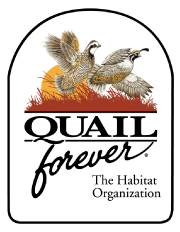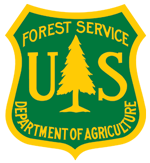News
Georgia's Revised Wildlife Plan Approved and at Work
A statewide strategy to help conserve hundreds of Georgia animal and plant species has been revised and is being put into practice following federal approval.
Request for Proposals - Conservation Web Map for the Little Tennessee River Native Fish Conservation Area Partnership
The Little Tennessee River Native Fish Conservation Area Partnership seeks a qualified contractor to collaborate with the Partnership to develop a web‐based watershed assessment, planning, and interactive mapping system that showcases conservation goals and target focus areas in the Little Tennessee River basin and also allows interactive collaboration, analysis, and data management of this web‐based watershed plan.
Chucky Madtom Draft Recovery Plan Available for Review
The Chucky madtom’s recovery now has a road map and the U.S. Fish and Wildlife Service is looking for your input before it is finalized to be sure it gives conservationists the best chance to ensure the rare catfish once again thrives in East Tennessee.
Managing Forests for Birds Video Series
A new video series by the Ohio Bird Conservation Initiative highlights the importance of proper forest management in improving a diversity of habitat for birds and other wildlife.
Land Trust Alliance is Calling All Filmmakers and Land Lovers!
Land Trust Alliance, TennGreen's accrediting body, is hosting a film-making competition about YOUR connection to the land.
New Web Tool Provides Climate-Smart Seedlot Selection Recommendations
The U.S. Forest Service, Oregon State University, and the Conservation Biology Institute have launched a free web-based decision-support tool to help natural resource managers match seedlots (seed collections from a known origin) with planting sites based on climatic information.
PFLCC is Hiring! Marine/Estuarine Conservation Target Project Lead & Prescribed Fire Spatial Database Project Lead
Two positions are currently open with the Peninsular Florida Landscape Conservation Cooperative (through the Florida Fish and Wildlife Conservation Commission), with both closing on November 1, 2016.
SARP's Latest News Update
Periodic news updates from the Southeast Aquatic Resources Partnership.
The Powell River gets Infusion of Freshwater Mussels in Restoration Effort
They're small, slimy and extremely slow moving. Freshwater mussels may not pass the eye test as one of nature's key players, but the unique filter-feeding creatures are vital to the ecological health of rivers and streams.
Successful Recovery and Removal from Endangered Species Act of Native Kentucky Plant a Victory for Conservation Partners
State of Kentucky and U.S. Forest Service played crucial role in recovering the white-haired goldenrod, adding to growing list of ESA successes
Create Wildlife-Friendly Spaces With Habitat Network
Today, The Nature Conservancy and the Cornell Lab of Ornithology launched Habitat Network, a free online citizen-science platform that invites people to map their outdoor space, share it with others, and learn more about supporting wildlife habitat and other natural functions in cities and towns across the country.
A Race Against the Clock for Brook Trout Conservation
Are brook trout destined for extinction? That is a future that Shannon White, a Ph.D. student working with Dr. Tyler Wagner at the USGS Pennsylvania Cooperative Fish and Wildlife Research Unit at Penn State University, is working to avoid.
New Landscape Conservation Fellow Comes Onboard
Gillian Bee is the new Appalachian LCC Landscape Conservation Fellow, stationed at Clemson University. In her current role she will be working with partners in the Tennessee River Basin to provide science-based decision support.
Managing Climate Change Refugia to Protect Wildlife
Natural and cultural areas that will remain similar to what they are today -- despite climate change -- need to be identified, managed and conserved as “refugia” for at-risk species, according to a study published today in PLOS One.
Stream Impacts from Water Withdrawals in the Marcellus Shale Region
A new study from the Appalachian Landscape Conservation Cooperative (LCC) and Cornell University looks at how the region's surface freshwater supply – and the health of natural systems delivering this resource – have been impacted and may be altered in the coming years under increasing water withdrawals.
Nations Celebrate Centennial of Landmark Migratory Bird Treaty
Agreement between U.S. and Canada responsible for many successes in bird conservation; will help us meet challenges that lie ahead.
Partners in Flight 2016 Landbird Conservation Plan Released
Scientists Document Widespread Declines, Urgent Need for Conservation of Landbirds in U.S. and Canada. Report calls for unprecedented partnerships across public and private sectors to reverse trends throughout bird’s life-cycles.
Ohio River Basin Fish Habitat Partnership 2017 Call for Project Proposals
The Ohio River Basin Fish Habitat Partnership is currently accepting proposals to fund on-the-ground, aquatic habitat protection, restoration, and enhancement projects within the Ohio River Basin.
Tools and Resources for Addressing Energy Development in the Appalachians
On July 20, Jessica Rhodes of the Appalachian LCC gave an in-depth presentation to the Appalachian Mountains Joint Venture (AMJV) community on LCC-funded tools and resources that can address potential impacts of various energy development technologies on birds and other wildlife.
In Cities Across the U.S., Americans Will Gain Improved Access to the Health Benefits of Nature thanks to New, Expanded Urban Partnerships
Over $2 million for groundbreaking U.S. Fish and Wildlife Service-led partnerships to engage local communities, advance wildlife conservation, reach the next generation of conservation leaders






















